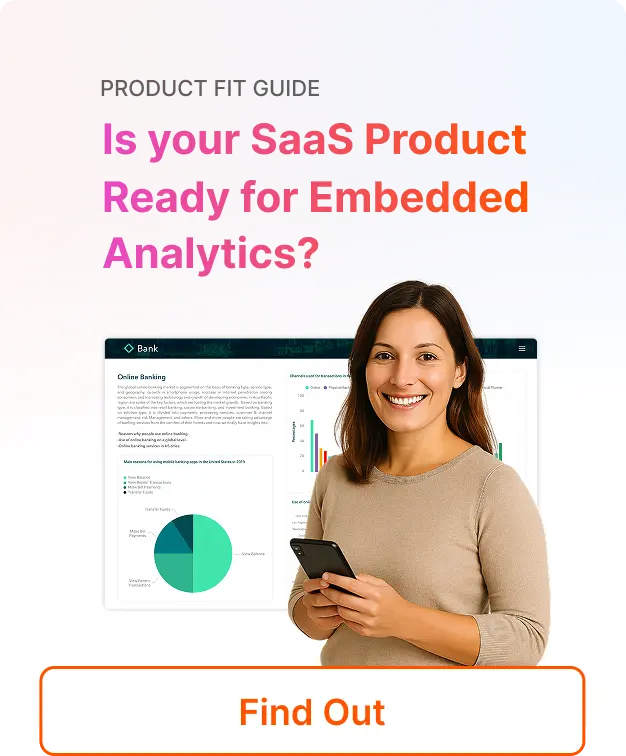
⚡Key Takeaways
- Looker is powerful but complex. It offers strong data modeling and Google Cloud integration, but comes with a steep learning curve, limited UI flexibility, and higher costs for embedded use.
- Qrvey is purpose-built for embedding. Unlike platforms that treat embedding as an add-on, Qrvey is designed specifically for embedding into SaaS products, offering white-labeling, automation, and flexible deployment.
- Choose based on your team’s needs. Looker may suit enterprise teams with technical resources, while Qrvey is a better fit for fast-moving SaaS companies looking for scalable, no-code embedded analytics.
If you’re exploring embedded analytics in 2026, there’s a good chance Looker is on your radar.
This is no surprise. This general purpose BI platform from Google has become a go-to solution for companies that want better insights into their business performance.
That said—it doesn’t come without its challenges.
In this guide, we’ll deep dive into the pros and cons of Looker’s analytics capabilities for the embedded use case. We’ll highlight common challenges teams face when integrating Looker into their SaaS product, and introduce an alternative that might better suit your needs.
What is Looker’s Embedded Analytics?
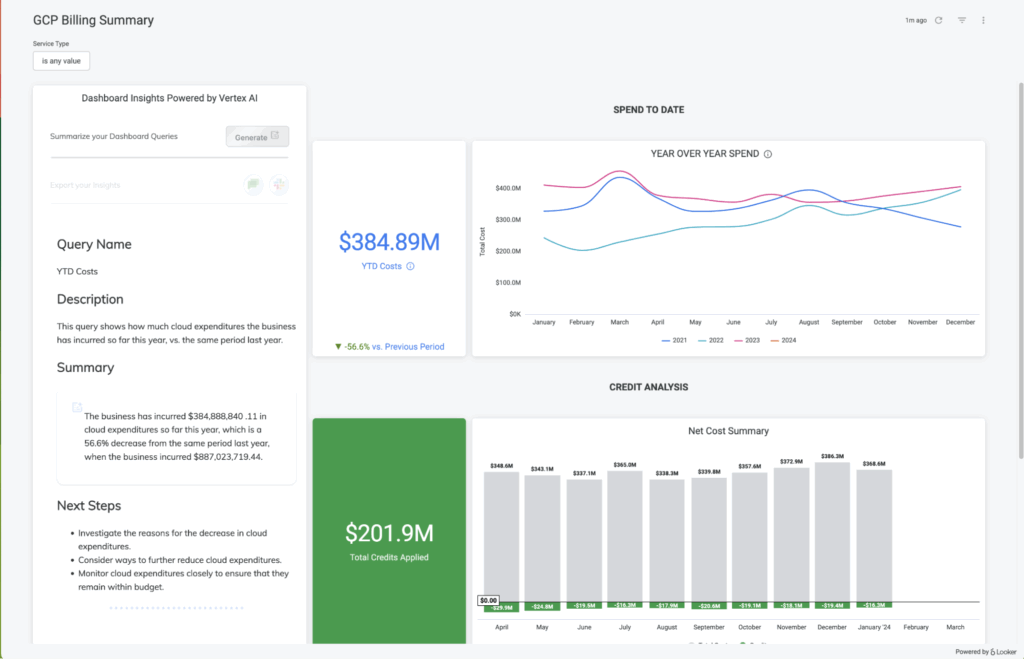
Looker is an advanced analytics platform by Google Cloud. Among other powerful features, it allows companies to embed analytics, dashboards and reports directly into their applications, portals, or websites.
Its main goal? Provide companies with a scalable way to share data insights right where users need them, without requiring access to the full Looker platform.
Moreover, Looker offers built-in governance and deep integration with Google Cloud. This appeals to teams that need centralized control over their analytics experience.
How Looker Embedded Analytics Works? Step-by-Step Breakdown
Integrating Looker’s analytics into your application involves embedding dashboards and visualizations directly within your existing platforms.
Here’s a step-by-step guide to understanding this process:
1. Choose Your Embedding Method
Looker offers several embedding options:
- Private embedding: Requires users to log into Looker separately, suitable for internal applications. It’s a simple approach—your application manages the iframe, and Looker handles user authentication.
- Public embedding: Allows unrestricted access without authentication, ideal for public data displays. Anyone with the public link can access the content.
- Signed embedding: Integrates Looker content into your application using your existing authentication system, providing a seamless user experience. This is ideal for customer-facing platforms.
Signed embedding is the more secure, flexible, and scalable approach, especially if your platform has its own user authentication system.
2. Set Up Looker for Embedding
Start by preparing Looker for secure embedding:
- Enable embedding in Looker admin: Before embedding anything, you need to activate embedding in your Looker instance. Go to Admin > Platform > Embed, then enable Embed SSO Authentication.
- Set permissions, restricting what each role can view, filter, or explore.
- Whitelist domains: Add your application’s domain to Looker’s allowed embed list to prevent unauthorized use.
3. Generate Embed URLs
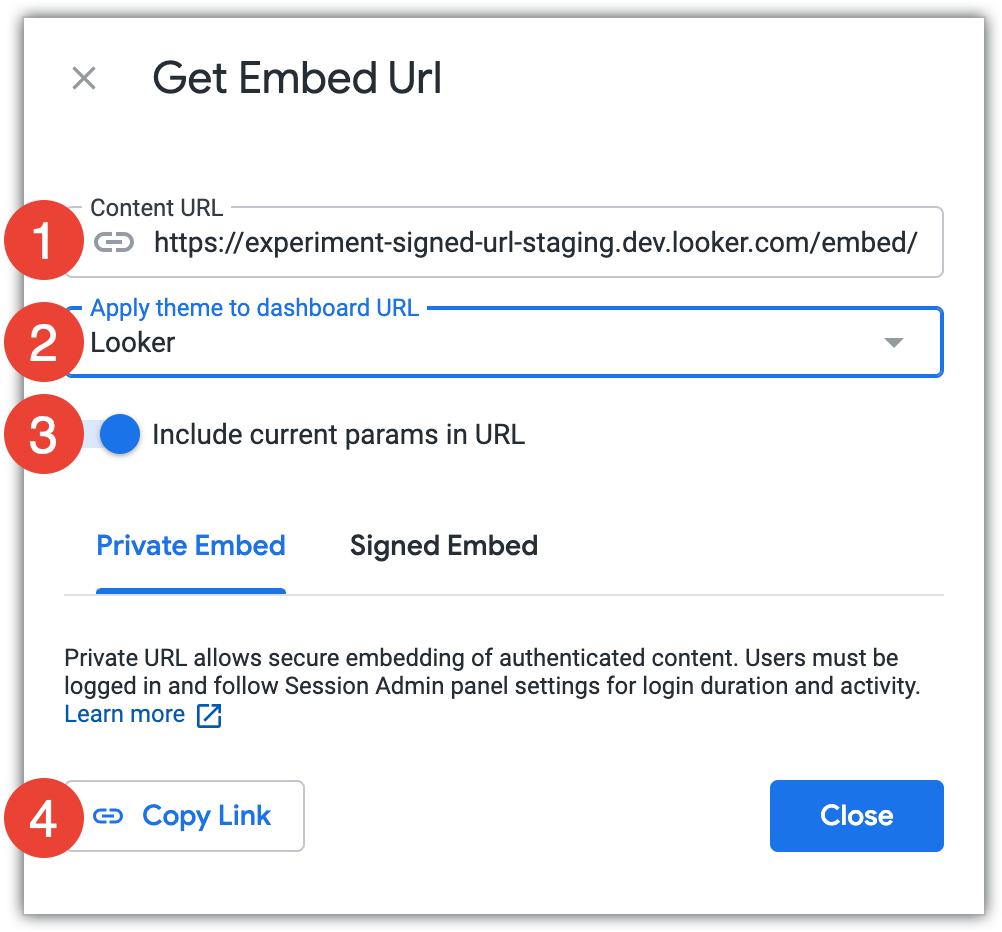
If you’re using signed embedding (recommended for secure, personalized access), you’ll need to generate a signed URL for each user session.
Here’s how it works:
- Build the URL: Include parameters like user ID, permissions, model access, and any filters or themes you want applied.
- Sign the URL: Use your backend and Looker’s SDK to create a secure, time-limited embed URL. It includes user info, and permissions, and is signed with your Embed Secret to ensure safe access.
This process ensures that only authorized users can access specific views—customized and secured just for them.
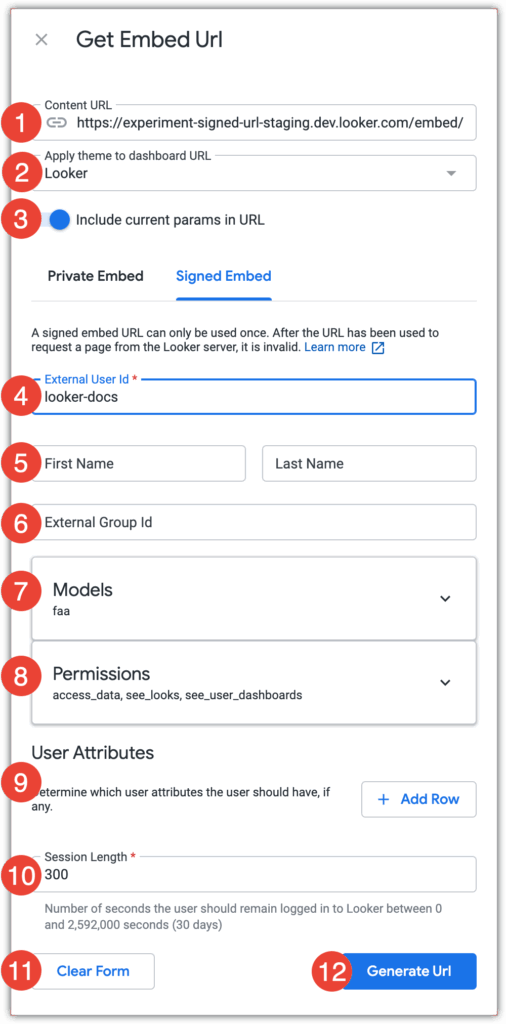
4. Embed Content in Your Application
To integrate Looker content into your application for private and signed embedding, follow these steps:
- Add URL parameters for customization: Enhance the user experience by appending parameters like theme, filter, or hide_title to your embed URL. These control the look and behavior of the embedded content.
- Implement the <iframe> in your application: Embed the Looker content within an <iframe> tag in your application’s HTML.
5. Customize the Experience
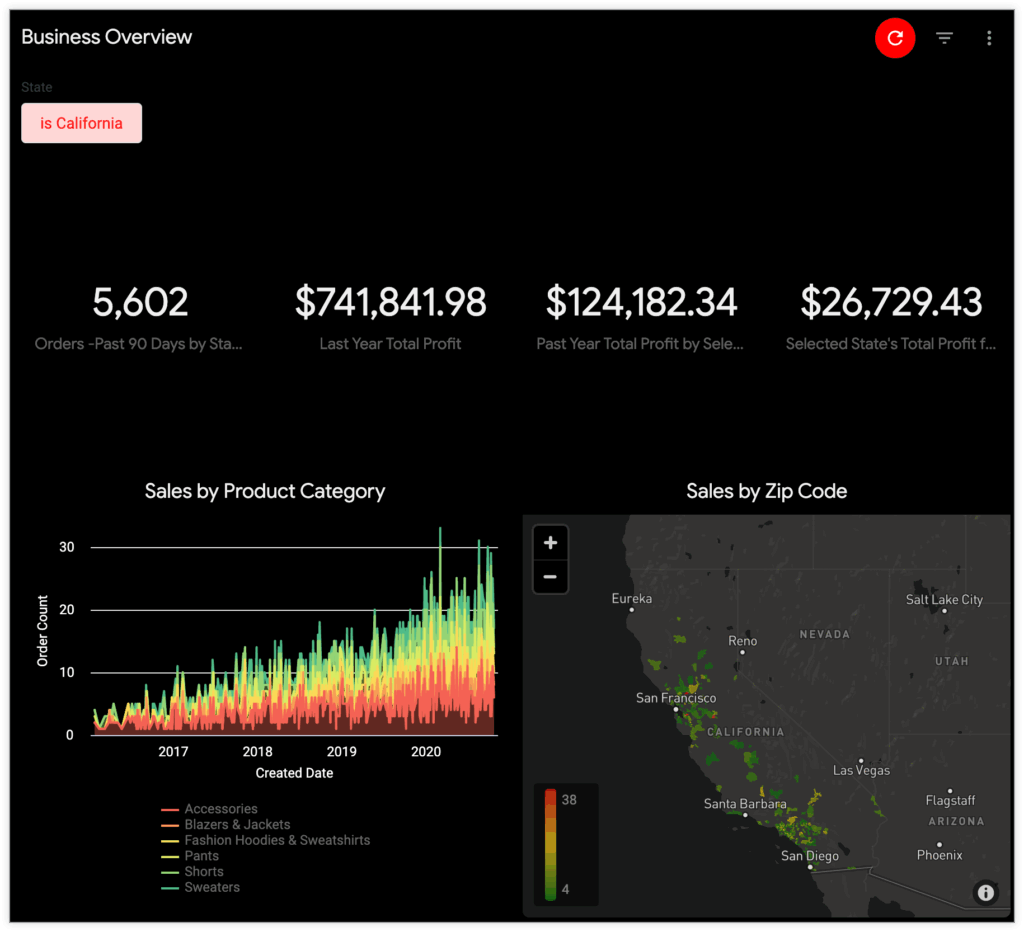
Once your dashboard is embedded, you can tailor its appearance and behavior to match your product’s look and feel.
- Apply custom themes: In Looker, go to Admin > Platform > Themes to create your own theme, including colors, fonts, and UI styling.
- White label the UI: With signed embedding and custom themes, you can remove Looker branding and present analytics as a native part of your app.
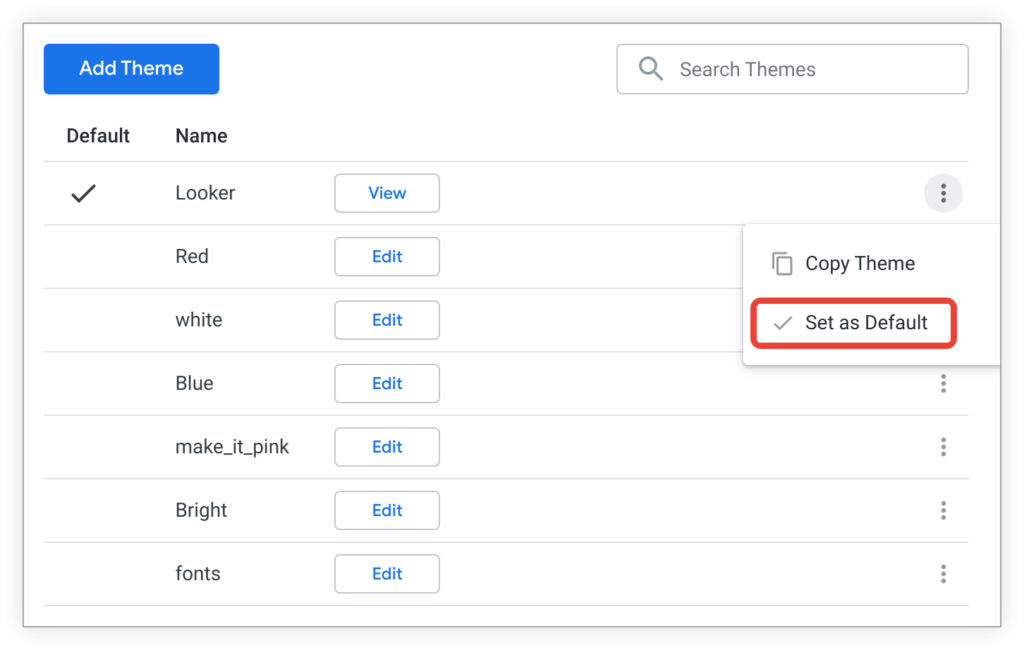
6. Handle User Authentication
To make sure users only see the data they’re authorized to view, set up secure authentication and permissions:
- Enable signed embedding: In Looker, turn on Embed SSO Authentication and set your Embed Secret in the admin panel.
- Manage roles and permissions: Use Looker’s permission sets, model sets, and access filters to control data visibility for each user or group.
- Secure the experience: Embed URLs should always include an “expires” parameter and be signed on your backend to prevent unauthorized access.
These controls ensure your embedded analytics are personalized, protected, and fully aligned with your app’s security model.
7. Test and Deploy
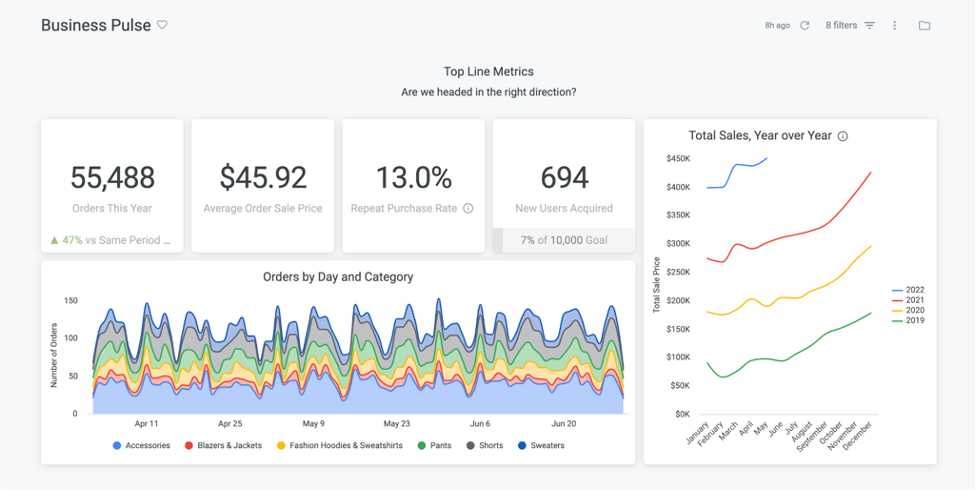
A successful deployment is about more than just code—it’s about the full user experience.
Before going live, test everything thoroughly to ensure a smooth, secure experience across user roles and devices. Here’s a checklist to guide you:
- Verify access controls.
- Monitor the load times.
- Ensure responsiveness across devices—including desktops, tablets, and mobile phones.
Qrvey: An Alternative
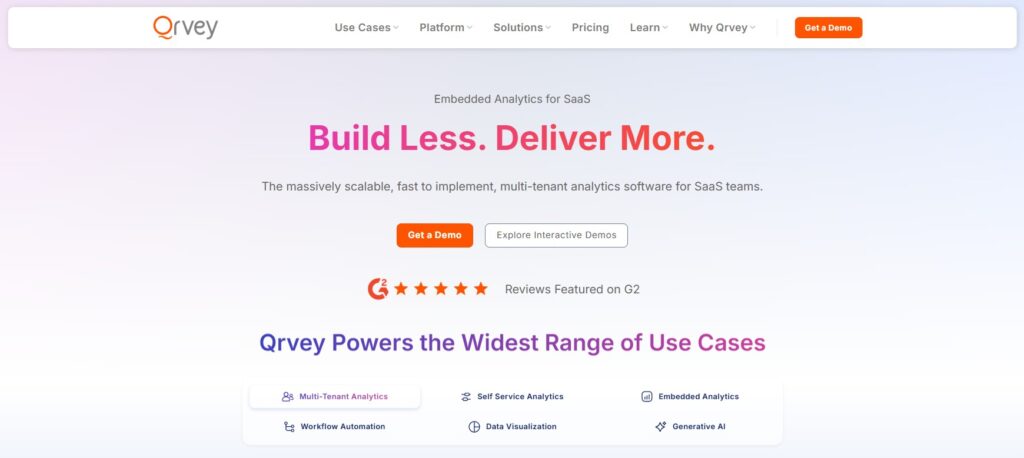
Here’s the thing with Looker—it might get complicated and often requires relying on technical teams to manage LookML, optimize performance, and maintain user permissions.
Looking for a simpler, more flexible alternative? Qrvey might be a great fit—especially if you’re building a SaaS product.
Qrvey is made for software teams that want to embed analytics directly into their apps without a lot of complex setup or long implementation times, especially when comparing Qrvey vs Looker for embedded use cases.
And not only that—it offers a custom pricing model, perfect for scalability and flexibility.
Looker Integrations
So, what’s one of the main reasons you would choose Looker Studio? Simple—integrations.
Pulling in data, pushing out reports, or triggering workflows? These help you keep everything in sync—without jumping between platforms.
1. Google Cloud Platform (GCP)
Looker is part of Google Cloud, providing seamless integrations with tools like BigQuery, Cloud Storage, Google Analytics, and Google Sheets.
All in all, this makes it easy to connect your analytics to your infrastructure and analyze data directly within the Google ecosystem.
2. Looker Marketplace
The Looker Marketplace is a hub for plug-ins, pre-built analytics blocks, and apps that extend Looker’s functionality.
You’ll find tools for retail analytics, cloud cost tracking, marketing analytics dashboards, and more. All ready to deploy with minimal setup.
3. Third-Party Tools and Connectors
Looker also connects to popular external applications and business intelligence tools. This unifies your marketing, product, and customer data into a single Looker dashboard.
Benefits of Using Looker for Embedded Analytics
Looker is a popular choice for embedded analytics. In short—because of its powerful data modeling, secure architecture, and tight integration with popular tools.
Next, we break down some of the reasons teams choose Looker when embedding analytics:
Centralized Data Modeling with LookML
Looker uses LookML, a language that helps define how your data should be organized and calculated. It keeps things consistent—so everyone sees the same metrics, filters, and results, whether they’re using Looker directly or viewing an embedded dashboard.
Seamless Integration with Google Cloud
As part of Google Cloud, Looker integrates with BigQuery and other GCP services.
This close integration makes it easier to handle your setup, process data faster, and keep everything secure—all within the same cloud environment.
Robust Security and Governance
Looker lets you control exactly who can see what data, down to individual rows. It also tracks user activity. This is especially important for SaaS companies and enterprises that serve different user groups or work in regulated industries.
Developer-Friendly Embedding Options
Looker supports embedding capabilities. This makes it easy for developers to embed dashboards, visualizations, and full analytics experiences into their applications.
Customization and Theming
Embedded dashboards can be customized using themes, filters, and layout controls. You can match the look and feel of your product, remove Looker branding, and create a white-labeled analytics experience.
Limitations of Looker Embedded Analytics
Looker is a powerful tool. That said, it comes with a couple of drawbacks—especially for embedding analytics into external apps. Here are some limitations that teams often run into during implementation or scaling.
Limited UI Customization
Looker offers some theming options. Still, the overall layout and interactivity are hard to customize. For teams looking for end-user personalization or highly interactive dashboards, the iframe-based approach can feel restrictive.
Steep Learning Curve
To get the most out of Looker, you’ll need to learn and maintain LookML—its modeling language. This adds a steep learning curve for teams without dedicated data engineers or prior experience.
Performance Depends on Query Design
Because Looker pulls data in real-time, dashboards can slow down if your data setup isn’t optimized. Things like complex queries or missing indexes can cause longer load times for embedded content.
Higher Cost for External Embedding
Using Looker for embedded analytics can be costly. Pricing is often based on how many users you have, which can add up quickly for growing SaaS businesses.
Limited Interactivity
Unlike fully embedded analytics, Looker’s dashboards are mostly read-only. While users can filter and explore data to some extent, advanced interactivity (like drag-and-drop or write-back) requires significant custom development.
See our top Looker Studio alternatives for better analytics options.
Looker Embedded Analytics: Pricing Overview
Looker doesn’t have fixed per-user pricing. Instead, it offers custom quotes based on company size, deployment setup, usage, and other factors.
This means that costs can be higher for larger implementations, compared to other tools.
Who Looker is Best For
Looker is a good fit for companies that have more complex data needs and the resources to support them. Here’s who it’s best suited for:
- Teams using Google Cloud
- Companies with technical teams, as LookML and data modeling require some expertise.
It’s not ideal for small teams, SaaS companies, or startups that want a quick, no-code setup.
Why Qrvey Is a Better Alternative to Looker for Embedded Analytics
If you’re evaluating embedded analytics, Qrvey is a smart alternative to traditional platforms like Looker.
It’s built specifically for SaaS apps and provides a full-featured, no-code solution that fits right into your product—making it easier to launch faster and deliver a better user experience.
Looking to transform financial data into actionable insights? Or optimize IT software dashboards? In any case, Qrvey’s embedded analytics adapt to your product and needs.
Key features
Self-Service Analytics
Turn static dashboards into interactive, secure, and customized embedded analytics with Qrvey’s self-service analytics capabilities.
- Full white-labeling support for a branded, seamless experience.
- Multi-tenant architecture with role-based permissions.
- Easy-to-use self-service tools for non-technical business users.
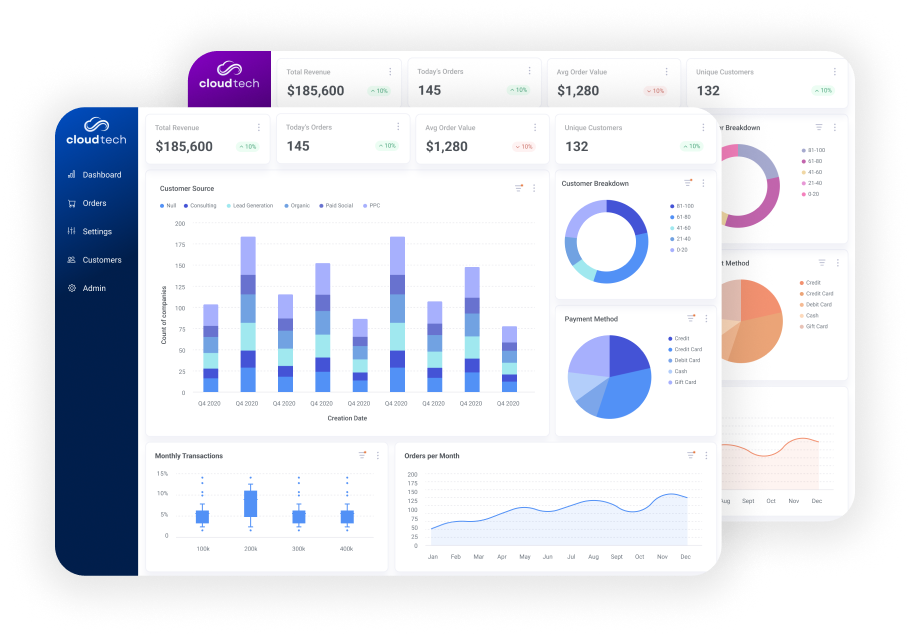
No-Code Workflow Automation
No more manual processes. Qrvey offers automated analytics and workflows to simplify data management.
- Built-in data prep tools for real-time insights.
- AI-powered enrichment to detect patterns and trends automatically.
- Automated triggers to collect and transform data in real-time.
- Generative AI analytics for faster insights and natural language queries.

API-First and Developer-Friendly
Qrvey is designed for maximum flexibility, scalability, and customization.
- Customizable UI components to match your product’s look and feel
- Elastic scalability to support growing data volumes and user bases
- Built for flexibility across deployment environments (AWS-native)

Pricing
Qrvey provides custom pricing tailored to your organization’s specific needs, making it a flexible option for both SaaS companies and enterprises.
Instead of traditional per-user pricing, Qrvey’s model is built for scalable embedded analytics—factoring in things like multi-tenancy, automation features, and deployment setup.
Where Qrvey Shines
- It’s a purpose-built embedded analytics solution. Looker or other platforms offer embedding as an add-on. In contrast, Qrvey is designed for embedded use, making it one of the best embedded analytics tools in the market.
- Developer-friendly: Its strong API foundation makes it easy for developers to embed, scale, and customize analytics—no technical hurdles.
- Optimized for live performance, leveraging AWS for real-time insights.
Where Qrvey Falls Short
- It’s specifically designed for embedding analytics. If you need standalone platforms, it’s probably not the best choice for you.
Customer reviews
“Excellent platform for embedded, cloud-native analytics and automation on AWS” – Dara K., verified G2 review
Who Qrvey is Best For
- SaaS platforms that need scalable, multi-tenant embedded analytics.
- Enterprises looking for a fully customizable, white-labeled analytics experience.
- Product teams that want API-first, automated analytics—without relying heavily on engineering.
Choose the Right Embedded Analytics Software
At the end of the day, the right embedded analytics tool depends on your needs.
Looker is a solid option for larger teams with complex data setups, but it can be a bit heavy for fast-moving SaaS companies.
Meanwhile, Qrvey is built specifically for embedded use. This means it’s easier to scale, customize, and make your analytics feel like a natural part of your app.
Curious how it works? Book a demo and see Qrvey in action.

Natan brings over 20 years of experience helping product teams deliver high-performing embedded analytics experiences to their customers. Prior to Qrvey, he led the Client Technical Services and Support organizations at Logi Analytics, where he guided companies through complex analytics integrations. Today, Natan partners closely with Qrvey customers to evolve their analytics roadmaps, identifying enhancements that unlock new value and drive revenue growth.
Popular Posts
Why is Multi-Tenant Analytics So Hard?
BLOG
Creating performant, secure, and scalable multi-tenant analytics requires overcoming steep engineering challenges that stretch the limits of...
How We Define Embedded Analytics
BLOG
Embedded analytics comes in many forms, but at Qrvey we focus exclusively on embedded analytics for SaaS applications. Discover the differences here...
White Labeling Your Analytics for Success
BLOG
When using third party analytics software you want it to blend in seamlessly to your application. Learn more on how and why this is important for user experience.




